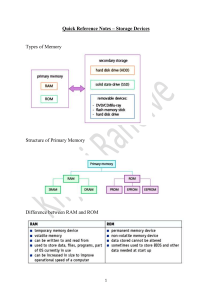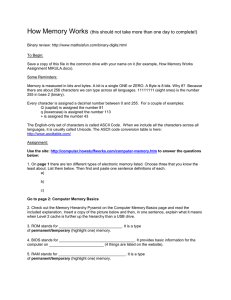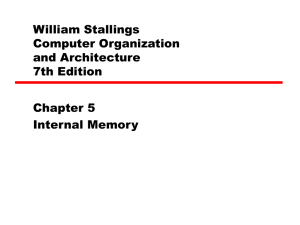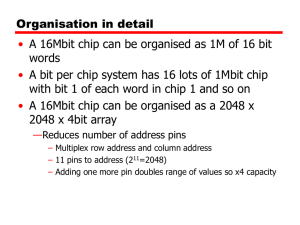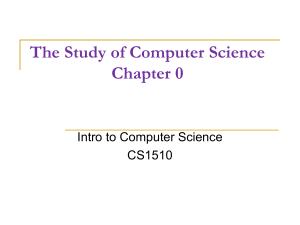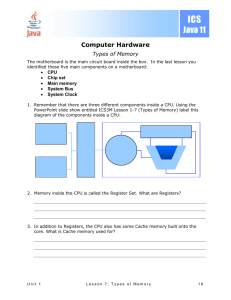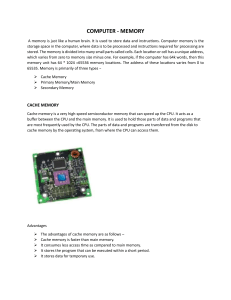Computer Memory: RAM, ROM, and Error Correction
advertisement
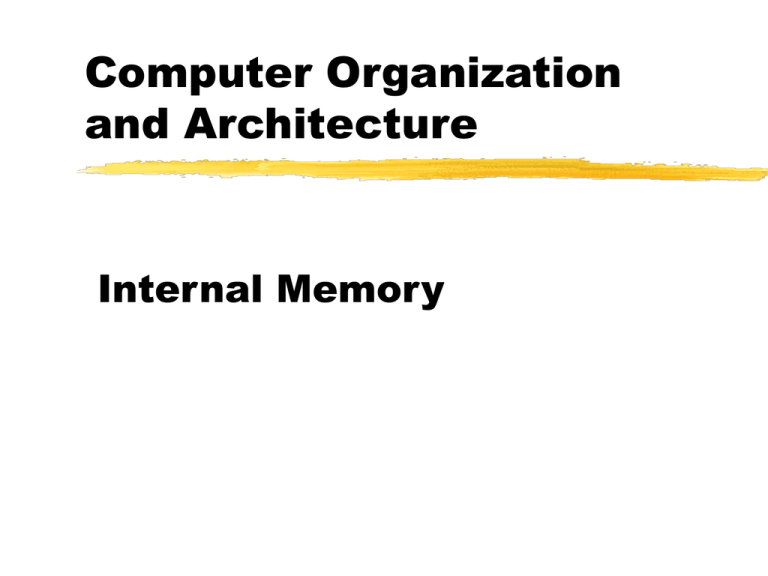
Computer Organization and Architecture Internal Memory Semiconductor Memory RAM Misnamed as all semiconductor memory is random access Read/Write Volatile Temporary storage Static or dynamic Dynamic RAM Bits stored as charge in capacitors Charges leak Need refreshing even when powered Simpler construction Smaller per bit Less expensive Need refresh circuits Slower Main memory Static RAM Bits stored as on/off switches No charges to leak No refreshing needed when powered More complex construction Larger per bit More expensive Does not need refresh circuits Faster Cache Newer RAM Technology (1) Basic DRAM same since first RAM chips Enhanced DRAM Contains small SRAM as well SRAM holds last line read (c.f. Cache!) Cache DRAM Larger SRAM component Use as cache or serial buffer Newer RAM Technology (2) Synchronous DRAM (SDRAM) currently on DIMMs Access is synchronized with an external clock Address is presented to RAM RAM finds data (CPU waits in conventional DRAM) Since SDRAM moves data in time with system clock, CPU knows when data will be ready CPU does not have to wait, can do something else Burst mode allows SDRAM to set up stream of data and fire it out in block Read Only Memory (ROM) Permanent storage Microprogramming (see later) Library subroutines Systems programs (BIOS) Function tables Error Correction Hard Failure Permanent defect Soft Error Random, non-destructive No permanent damage to memory Detected using Hamming error correcting code Error Correcting Code Function
